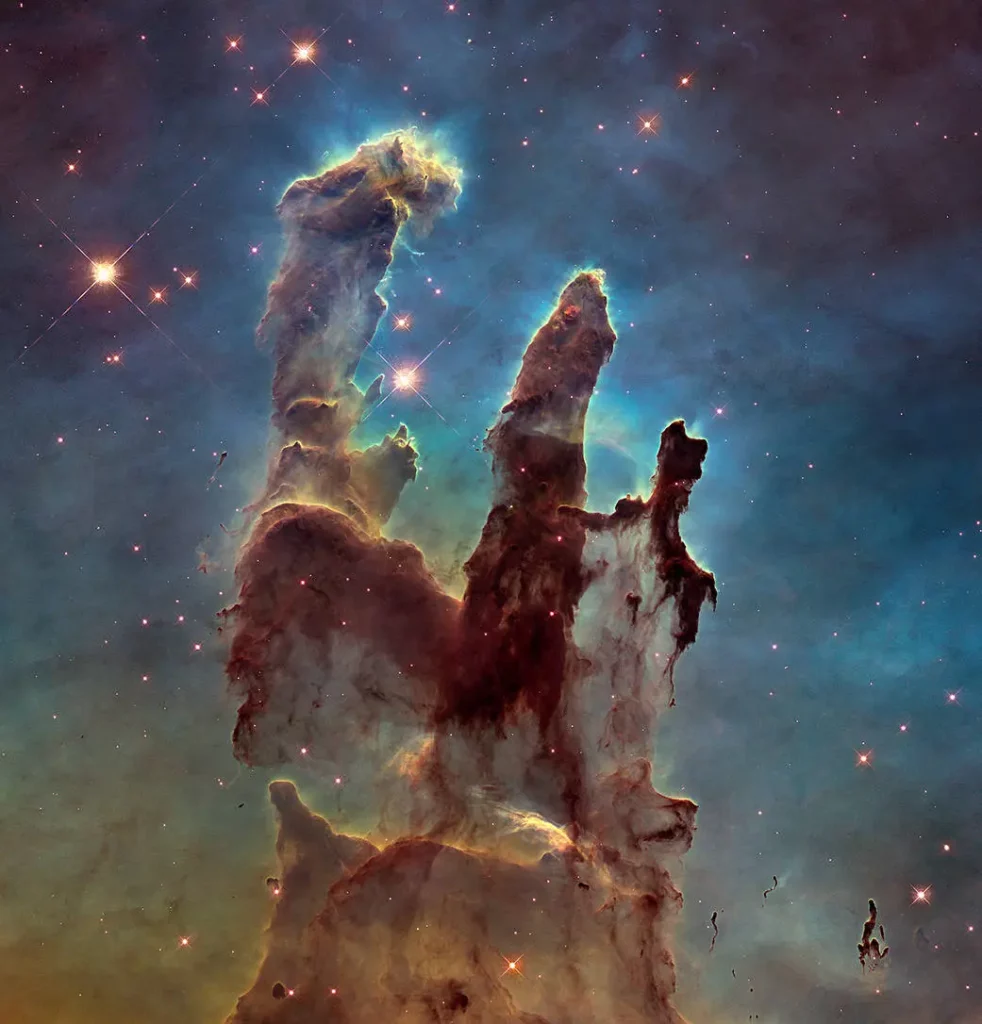My favorite example of a flow visualization is the image known as “The Pillars of Creation.” This image was taken in 1995 by the Hubble Telescope, which is operated by NASA. It shows gas flows of star formations within the Eagle Nebula. The combination of gravitational collapse, radiation pressure, shockwaves, and turbulence creates the wispy appearance of the gasses in the image. During a star formation, gravitational collapse pulls gasses in, creating a dense star-forming region. When a star is formed, a massive shockwave is emitted, which disperses the gasses outwards, giving the feeling of motion to the image. Radiation pressure erodes the edges of the gas clouds, creating the sharp edges of the formations. Lastly, the turbulence caused by the flows creates chaotic patterns within the gas cloud. This image perfectly encapsulates how complete natural processes create immense beauty that is more incredible than anyone could imagine.
Credit: NASA

8 Comments. Leave new
First Prize: the movement of space dust, the stars and planets hidden and all the elements added up make this probably the best picture i have seen as of now
Third Prize – This image does a great job of showing that fluid dynamics is present on very macro scales
Second Price: Gorgeous picture.
First prize: I find space interesting and i think this is a good picture
Third Prize: This image is a classic. Its beautiful color combination and turbulent sections help visualize a complex, mind-boggling process that we might otherwise never get to see. The pillars are fairly centered in the image, though, so, while the ones on each side are kind of near the thirds lines, the image overall feels slightly blocky to me. (I feel like the aesthetics could be improved slightly by altering the framing marginally.)
First Prize: The Pillars of Creation is one of the most iconic images ever captured, especially with the new picture taken by the James Webb Space Telescope. These images give us a breathtaking view of the vast and beautiful universe we inhabit. When compared to its immense scale, we are smaller than a speck of dust, yet the universe reveals its astonishing beauty.
First Prize: This iconic image depicts the movement of gases on a grand scale difficult to imagine, in an environment that most people are unfamiliar with. It marks a fantastic intersection between art and science, with both factors complimenting each other.
Third Prize: Viewing the movement of gases that are not constrained by gravity (at least in the same way as we see them in our atmosphere) and coupling that with the vastness of the universe and the grand scale effects of this picture are enough to give anyone a sense of awe